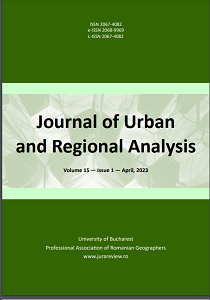ANALYSIS OF SPATIAL DISPARITY OF PHARMACIES IN VIRGINIA, U.S.A.
ANALYSIS OF SPATIAL DISPARITY OF PHARMACIES IN VIRGINIA, U.S.A.
Author(s): Xueming Chen, I-Shian SuenSubject(s): Regional Geography, Health and medicine and law, Rural and urban sociology, Welfare services
Published by: Editura Universitară
Keywords: spatial disparity; accessibility; geospatial analysis; pharmacy; Virginia;
Summary/Abstract: Many scholars have studied spatial equity issues of urban service delivery facilities in the past, including the pharmacy accessibility and pharmacy deserts. However, the analysis of spatial disparity of pharmacies in Virginia is lacking. To fill this research gap, we employed both statistical and geospatial methods to examine the pharmacy disparity and desert issues in Virginia. These methods include correlation, stepwise regression, average nearest neighbor analysis, network analysis, and geographically weighted regression (GWR). We examined five vulnerable populations and their accessibility to pharmacies. These subpopulations include racial minorities (defined as nonwhite population in this study), persons with income below the poverty level, older adults (age 65+), persons with disability, and households without vehicles. We found that spatial inequity of pharmacies exists in Virginia. At the statewide macro level, the spatial distribution of older adults is, largely, correlated with that of pharmacies. However, as revealed by GWR at local levels, the spatial pattern of pharmacy distribution is much more complicated, exhibiting both spatial inequity and social inequity (especially racial inequity, which is ubiquitous in Virginia). Pharmacies may be adequate for certain groups of people, but simultaneously inadequate for others.
Journal: Journal of Urban and Regional Analysis
- Issue Year: 15/2023
- Issue No: 1
- Page Range: 105-124
- Page Count: 20
- Language: English

